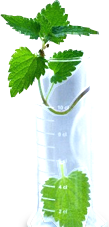



Author(s): M.L. Sanyasi Rao and Y.N.R Varma
The paper deals with exploration of Traditional animal health care practices of pastoralist and folk-lore communities in the Medak district of Telangana Sate.56 healers were interviewed and recorded the methods of collection of medicinal plants and methods of preparation of the drugs used by Pastoralist communities like Kuruma, Golla, Lambada and other folk-lore of Mudiraj, Kapu and Gouda communities. A total of 172 plant species belonging to 149 genera under 66 families of angiosperms are recorded. In all a total of 214 remedies were recorded for 43 veterinary disease conditions. The herbal medicines are composed of single plant drugs, two plant drugs, and three or more than three plant drugs. The herbal medicine is presented disease-wise alphabetically. The information includes the medicine, mode and duration of administration along with vernacular and scientific names of the plant parts and other ingredients. The common veterinary disease in Medak district for which folk-lore herbal medicine are available for anoestrus, anorexia, bloat, bone setting, bronchitis, corneal opacity, controlling bluetongue, cuts and burns, debility, diarrhoea/ dysentery, difficulty in delivery, dog bite, dyspepsia, eye injury, fevers, foot rot, fowl pox, galactagogues, heamaturia, horn fracture, hydrocynic acid poison (tympani occurs due to consumption of poison leaves which contain hydrocyanic acid), intestinal worms, impotency in bulls, maggot or septic wounds, mastitis, paraplegia, Peste des petites ruminant (PPR), pneumonia, postpartum haemorrhage, poultry diarrhea, retained placenta, snake bite, sprains, stomach ache, stomatitis, swelling in testis, trypanosomiasis, tick/lice, tumors, weakness and yoke gall.